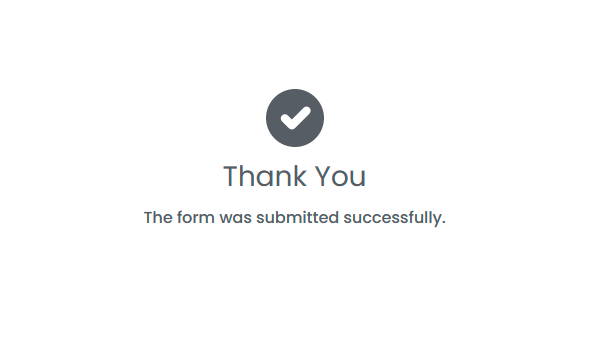Consumer Products and Wearables
At dawn of the IoT era, most revenues were coming from the industrial domains. The situation changes as new generations of IoT platforms compete with coding the consumer IoT applications from scratch.
In contrast to the PaaS-only competition, AggreGate allows you to build a redistributable IoT product, white-label it and offer the packages installable on-premise. The SaaS delivery is also available since our pricing model allows you to deliver a service after paying a one-off perpetual license fee.
The platform will save you hundreds of labor hours during the first prototype delivery and thousands of hours within the first years of your product evolution. It guarantees you will need a near-zero coding for the backend and very little coding for the frontend.
Longstanding OEM Focus
Various device manufacturers started using our platform for building their monitoring, control and management products earlier than the IoT term got widespread. A comprehensive rebranding program assumes that a derived solution will fully inherit your corporate identity. It can be redistributed as a product installed on-premise or offered as a cloud service.
Direct and Gateway-Based Connectivity
Protocol-agnostic nature of the platform makes no difference whether your wearable is IP-enabled or connects through a gateway (e.g., Bluetooth smartphone or USB hub). Our data normalization technology abstracts the incoming items from peculiarities of the physical network and communication protocol structure. Moreover, an object modeling engine allows having the homogenized digital twins for different devices of the same type.
OTA Firmware Upgrades
AggreGate maintains a central repository of the versioned firmware files. It can push a proper file to a device itself or a gateway once the custom upgrade conditions are met. The whole infrastructure adapts to almost any device-side implementation of the upgrade procedure.
Wearable-to-Smartphone Bridging
Your wearables or appliances don’t need to be able to talk with smartphones and tablets directly. The users will get warned about any valuable facts or alerts via e-mails, SMS messages and push notifications unicasted by the cloud platform.
Optimized for Lightweight MCUs
AggreGate can configure devices and collect events via 50+ standard communication protocols, including such simple ones as MQTT, HTTP or Modbus. This is enough for enabling a low-cost microcontroller with the limited CPU/RAM resources to talk to the platform. The open-source Driver Development Kit offers another option: adding a platform-side support for your own protocol, e.g. based on the JSON streaming or even the simplest CLI.
Web Portal Design Kit
Building a web UI for managing your devices is more than just dragging a few gauges, charts and maps to a dashboard. However, coding a frontend and a backend of this UI (let’s say in Java and JavaScript) often makes it the most expensive part of your product. With AggreGate, this UI is made of visual “bricks” with thousands of configurable properties that can be dynamically bound to the server data model. You leverage the pixel-deep customization of visual components without writing a single line of code.
Mobile App SDKs
In contrast to the web UI, designing a custom web application for managing your wearables or appliances still requires some coding. However, the open-source mobile SDKs facilitate the development process by taking care of server communications, authentication/authorization process and getting object-level access to the platform’s unified data model entities.
Smart Appliance Management
AggreGate monitors and controls your connected assets regardless of their physical network protocol - it’s equally suitable for a smart refrigerator with Wi-Fi connectivity and an LPWAN-based gas meter. AggreGate Platform servers relay the user-initiated and internally generated control/configuration operations to the devices. The mass configuration mode tracks success of every individual operation even if it has initially failed due to a device problem or network failure.
Maps
Show devices, groups, routes, geofences, links, and other objects on the geographical maps that use any source, such as Google Maps, Bing Maps, OpenStreetMap, or others. Add the layers, controls and selectors to your maps, and visually build any custom operator interfaces.
GNSS Tracking Expertise
If your wearables come with a GPS or other navigation chip, the overall success of your product will be likely based on the mapping features and geoservices. Our experience in asset tracking, fleet management and other GIS-based solutions ensures you can build multi-level maps, setup geofence breach alerting and design location-related reports in mere days.
Energy Efficiency and Usage Analytics
Advanced IoT analytics offered by the platform helps you build and train the statistical models and use these models to analyze, predict and optimize the parameters vital for your wearables business. This includes relations between using a device itself and its web/mobile UI, correlation between the device operations and battery lifetime, most popular usage patterns, A/B testing results of the new firmware features and mobile apps, and much more.
Telemedicine and Healthcare
AggreGate is a foundation for the telehealth cloud services operating with the cardio and insulin sensors, bracelets for the operators of hazardous machinery, smart pills, professional fitness trackers, and other mobile medical devices. Those solutions require deeper-than-average concentration on the industry-specific data processing, such as analysis of the ECGs posted by devices. This is exactly what the platform is designed for: it allows you to have more doctors and fewer software engineers in your team.
